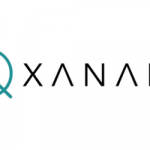Atom Computing’s CEO Rob Hays’s 2022 quantum computing predictions

(AtomComputing) Atom Computing CEO Rob Hays has released a list of his top six quantum computing technology predictions for 2022.
The following is from his blog post on the subject:
1. Newer quantum computing modalities will achieve eye-opening breakthroughs
In 2022, we are going to see an acceleration of technical demonstrations and product readiness in neutral atom technology – building further interest and credibility in the approach. By the end of the year, I predict that neutral atom-based quantum computing will be on equal footing in terms of customer awareness compared to the earlier technologies – superconductors and trapped ions. We may also see demonstrations of photonics and other new technologies not yet on most peoples’ radar screens.
2. Increased attention in NISQ use-cases at various scales
I predict we will see novel ways of using NISQ machines for a modest set of interesting use-cases in financial services, aerospace, logistics, and perhaps pharma or chemistry. This year, I believe that applications developers will figure out how to gain more commercial value out of NISQ systems with thousands of qubits, but the hardware won’t quite get there in 2022. Additionally, I expect to see demonstrations of mid-circuit measurement and error correction on a number of modalities this year pointing toward the end of the NISQ era and a more productive quantum computing era on the horizon.
3. Leading US and Chinese Cloud Service Providers will double down on quantum computing
Cloud Service Providers (CSPs) should benefit greatly from quantum computing given their breadth of pervasive services, the deep integration of artificial intelligence (AI) into their workloads, and the opportunity to vastly improve AI prediction models based on the highly-parallel, statistical nature of quantum computing. They also control their own infrastructure, applications, and customer interfaces, and have deep technical expertise in semiconductors, system design, and software development. Building their own vertically-integrated solution stack saves cost by eliminating vendor margin stacking and provides better services through hardware and software co-optimizations. All of this gives the CSPs a unique ability and the motivation to own proprietary quantum computing hardware and software technologies.
4. Investments in Quantum will continue to break records
While the size and growth rate of investment is large, the expected size of the quantum computing market is much larger. We are at a point where quantum computing is turning a corner from scientific research and proofs-of-concept to hardware and software engineers building products with commercial promise in the next few years. More investment is required to deliver large-scale quantum computing that benefits a broad set of industry verticals and use-cases. I expect the amount of money invested in quantum computing to continue rising in 2022+ with more companies entering the race. At least two companies have signaled intent to IPO soon. I wouldn’t be surprised to see at least 5 major acquisitions or IPO announcements before the end of the year.
5. Diversity and inclusion will be a bigger focus in Quantum Information Science (QIS)
The research is clear. Teams who build and celebrate racial, gender, and cultural diversity benefit from a broader range of experiences and ideas which leads to better products and increased profitability. Like the broader tech industry as a whole, the QIS workforce does not currently represent the diverse population of our society. This is not a new issue, but it’s an important one that we need to address. Now is the best time to shape a more diverse workforce while the industry is young before the unconscious biases of “good ‘ole boys” networks have a chance to form. We need to continue to encourage students to enter into STEM programs with a particular focus on sponsoring underrepresented minorities and women in quantum physics and engineering programs to train them for future jobs in QIS.
6. Regional Quantum Centers of Excellence will enable tighter collaboration
In 2022, constellations of collaborators, organized by national and regional interests will emerge among university and government research labs and private companies in their region. Component suppliers, systems hardware companies, and software platform companies will begin working more closely together forming commercial alliances. They will share specs, IP, customers, and integrate and test their products together to deliver turn-key solutions (well at least solutions that don’t require a physicist to operate them). These collaborative partnerships will provide environments of innovation to accelerate technology and market development in their regions in an effort to gain an advantage over other regions in the quantum computing race.



















